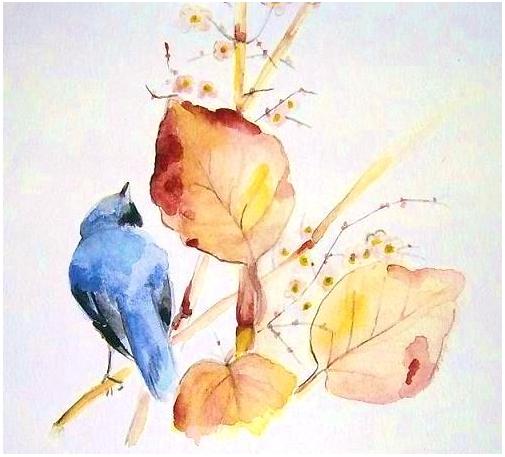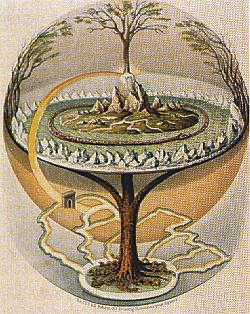
LIFE AS MYTH
![]()
JOURNAL
![]()
JOURNAL 2009
![]()
A feminine myth
Creating a new myth
![]()
![]()
![]()
![]()
![]()
LIFEWORKS
![]()
ATLAS
![]()

A mother owl with chicks. A bird with flowers and leaves. Usher. These pieces of art were prototypes for projects that I did with my clients during this time.
During 2009, I began editing and organizing my writing from the previous three years. My focus was on further development of the self-narrative paradigm which I began during graduate school at New York University. The paradigm was a reaction to the prevalent patriarchal monomyth and resulted in a broadening of my framework for meaning. The three working categories are mythology of planet, mythology of other, mythology of self. The foundation of feminine or intrinsic values suggests that being in community, in intimate relationship with planet, people and self, can provide a meaningful framework for living.
This period in 2009 also coincided with my earliest work in the use of visual arts within my counseling practice. The experience of my work and my clients has contributed greatly to my understanding and development of this paradigm.
THE VIEW FROM THE CENTER
What inspires me most about Paris is her sense of open horizon. Broad avenues, low graceful buildings and abundant natural space combine in a way that is as dégagé as an afternoon cup of coffee at a sidewalk café. And nowhere is that Parisian sense of uncluttered space and time more pronounced than at La Place de la Concorde.
Situated at the intersection of a major north-south and east-west axis, the plaza center is punctuated by a tall narrow obelisk, rather like an architectural exclamation mark to the extraordinary views which fan out from its center. From this vantage point you can see the Arc de Triomphe (west), the Madeleine (north), the Tuileries (east) and, across the Seine, the Palais Bourbon, (south). It is the axis mundi of this beautiful city of art and light. Axis Mundi, meaning the central pole of the earth, is a universal mythological concept which describes the place where heaven and earth, spirit and matter, and/or the four points of the compass meet. There are many forms that represent the concept, including specific geographical locations. According to mythic tradition, an experience of the axis mundi often correlates with the receipt of divine knowledge or gifts. The divine gifts can take many extraordinary forms: healing, writing, painting, prophecy, dreams and visions. However, La Place de la Concorde was not always imagined as a centering force for harmony in Paris.
In 1763 the plaza first came into being when the city erected an equestrian statue to celebrate the recovery of King Louis XV from a serious illness. Thirty years later, during the French Revolution, the nature of the plaza changed dramatically. The newly formed Parisian government replaced the equestrian statue with another imposing piece, entitled Liberté, and then placed a guillotine in the plaza center. They renamed the site La Place de la Revolution. From 1792 - 1795, there were more than 1300 executions on that guillotine, including such notables as Marie Antoinette, Louis XVI and Robespierre.
The plaza assumed its current incarnation in the mid-nineteenth century. Renamed La Place de la Concorde (the place of harmony), it was during this period that the Luxor Obelisk was erected in the location where the guillotine had once stood. At the same time, eight statues and two fountains with mythological themes were installed, which flank the plaza and obelisk to this day. This re-imagining of La Place de la Concorde as was a conscious effort on the part of Parisians to move from a troubled past into a more hopeful future.
How are we, each of us, so very like this plaza? We are like this plaza in that we also stand at the intersection of two eternal axes. The center point is Life, the intersection between Birth and Death. And we, each one of us, select the purpose and symbols that flank that center.
Symbols and purpose. These are the essence of personal and collective myth, the myth which lies at the heart of how we perceive the world and our place in it. Like La Place de la Revolution, we can choose to create a place of separation and conflict within us and around us. Or we can transform our center to a place of harmony, surrounded by myth and mystery. If we are indeed like the metaphors we embrace, then just imagine what would happen if we re-imagined our center by changing its symbols and purpose. Just imagine what horizons might open up before our eyes.

Yggdrasill: the world ash, Oluf Olufsen Bagge, 1847. This year's image, the world tree, is also known as Axis Mundi (meaning the central pole of the earth). It is a universal concept which describes the place where heaven and earth, spirit and matter, and/or the four points of the compass meet. There are many forms that are used to represent this idea, including plants, trees, humans, geometric forms, objects, and specific geographical locations. According to tradition, the experience of the axis mundi often correlates with the receipt of special knowledge or gifts.



